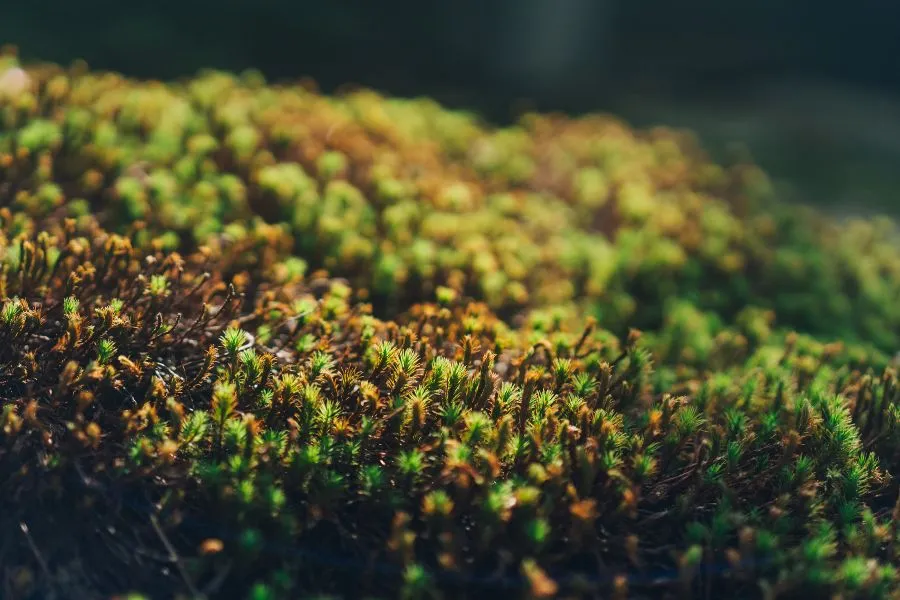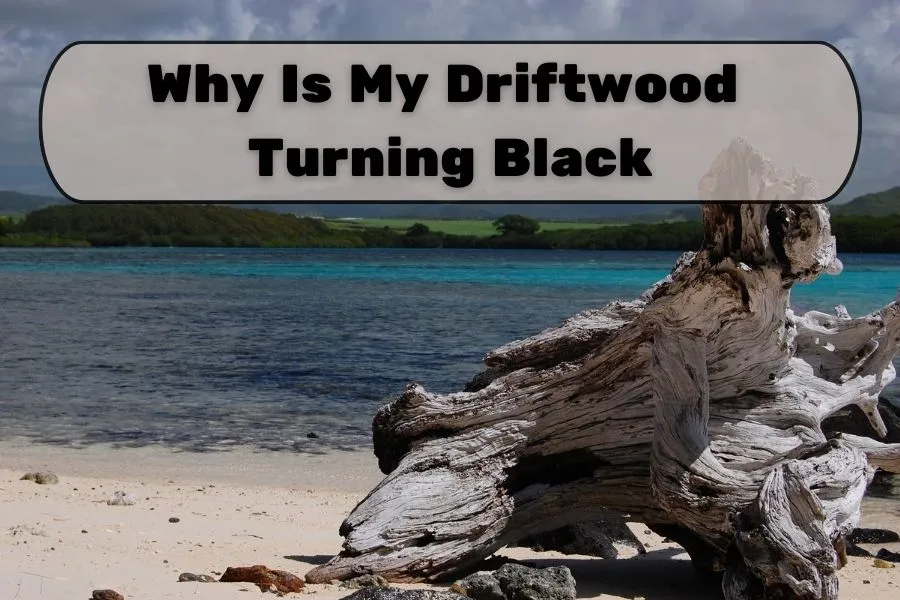Suppose you have your driftwood nicely sitting inside your fish aquarium or terrarium. Suddenly you start to notice your driftwood showing marks and signs of it turning black. You may be thinking now, “Why is my driftwood turning black?”
In general, driftwood turning black may be a sign of two major issues: if the wood is rotting, it could be the sign of a black beard algae infection. Both problems present separate signs and are generally treatable. Using driftwood from the right variety may slow down rot, and solutions can be used to treat black beard algae.

This article discusses why your driftwood is turning black and the steps you can take to manage or treat the issue.
READ MORE: Why Is My Driftwood Turning White?
Why Is My Driftwood Turning Black?
Driftwood turning black could be caused by your driftwood rotting or a sign of black beard algae growth. If the surface of your water has small pieces of crumbles and smells like poop, that should be rotting driftwood. If black spots on your driftwood look like stubbles, it could be black beard algae.
When you see black marks on your driftwood, the most likely reason would be your driftwood rotting, or it could be a sign of black beard algae growth. There may be other less common reasons.
Rotting Wood: Driftwood is essentially a piece of decomposing wood. However, it tends to decompose at a very slow rate, not visible to human eyes. However, permanently submerging it in water in an aquarium may just rot a little faster.
Generally, some types of driftwood may rot faster, while some rot much slower. Malaysian and Mopani driftwood seems to rot so slowly that you barely think they are rotting, which made them appreciated within the driftwood world.

To determine if your blackened driftwood may be a rotting sign, observe the driftwood’s appearance. If the black surface is extensive and does not seem to have a consistent shape, chances are it’s rotting.
You may also observe the surface of the water. If you see floating crumbles that may look like fish feed or fish poop, they may be pieces of rotting driftwood. Another confirming sign is your water may smell like poo.
Black Beard Algae: If the black marks on your driftwood resemble stubbles, you may have black beard algae growing in your aquarium.
Black beard algae start off looking like stubble, then eventually grow longer and longer, to reach their final form, looking like a furball with a long, flowing beard. The shine and black color of the algae may look straight out from shampoo commercials.

The black beard may grow on your driftwood for many reasons. One is that your aquarium may have a fluctuating CO2 level, and your tank may get a lot of natural sunlight. Aside from that, you may also be overfeeding your fish, meaning there is a lot of phosphate lying around to feed algae and help it to grow.
Black beard algae do not grow on driftwood alone. Still, they may spread into your fish tank’s rocks, plants, and piping, eventually taking over the whole tank if not controlled.
Is Rotting Driftwood Dangerous To Fish?
Rotting driftwood may be dangerous to fish, as it may alter the chemical and water content in the tank. Rotting driftwood may also disintegrate and release toxins when rotting. You may want to quickly remove the wood to see if you can remove the rotting layer and disinfect it.
As driftwood rots, the tendency is to rot on the surface. This means if your driftwood is rotten, it may have a soft and tender surface.

As the driftwood continues to rot, the soft surface may disintegrate from the driftwood and float to the surface. These crumbles may look like fish food leftovers or fish poop.
The issue with rotting driftwood is the uncertainty. As it rots, driftwood may release toxins that alter the water’s chemical balance, gaming your fish.
As such, you may want to quickly remove the rotting driftwood and see if you can still clean and save it.
Is Black Beard Algae Dangerous To Fish?
Black Beard Algae is not dangerous to fish. This is because the algae do not release any toxins into the water. In fact, as the algae grow to its full length, they become a nice place for fishes to swim around and hide in. The key with Black Beard Algae is to ensure they do not become overgrown.
Black Beard Algae may sound dangerous, but they do not harm the fish in your tank. This is because they do not release toxins into the water or become too long that it traps and tangles fish.

Instead, some experienced fishkeepers cultivate some black beard algae, as the shiny, black strands of the algae may look nice in aquariums. Fishes also enjoy swimming and hiding around colonies of black beard algae.
The key with Black Beard Algae is to manage its population and not let it overgrown. As they can be a nuisance when overgrown. Also when overgrown, they may block out sunlight from reaching other plants in your aquarium, potentially killing the plants.
How To Treat Driftwood Turning Black?
Treating driftwood turning black may involve brushing, boiling, and bleaching to remove the rotten layer. You may also treat the water with hydrogen peroxide, boost CO2 levels, or regulate phosphate levels to control black beard algae growth.
Brushing: If the driftwood is rotten, you may first take the wood from your aquarium and brush over it with a medium-strength brush. The soft rotten outer layer may be brushed away, revealing a still sturdy wood underneath.
In this case, the rot is still not too extensive, meaning you may still place the driftwood back into the tank, with some treatment first.
Boil and Bleach: One of the things you can do to slow down your driftwood rotting is to clean and disinfect it. You do so by boiling the driftwood and then soaking it in bleach. It is best to do this first thing when you receive the driftwood, but better late than never.
Start by placing the wood in boiling water for about 1-2 hours. After that, allow the driftwood to cool and dry up. You may notice the color may have turned lighter, as boiling the driftwood would have extracted some tannins from it.
Then soak the driftwood in a 1 part bleach, 9 part water solution for 3-4 days. Change the bleach solution every day for the best results. Boiling and bleaching would kill off all spores, and microorganisms inside the driftwood, slowing its rot.
Use Sturdier Driftwood: Some variants of driftwood tend to rot much slower than others. Malaysian or Mopani driftwood has a reputation for rotting much slower, making them more expensive.
You can also consider Spiderwood or Manzanita for slower rots. Cedarwood is relatively soft. However, they also rot slowly.
Remove The Stubbles: For Black Beard Algae problems, start by physically removing the stubbles away. This helps to remove algae before they grow and spread. If the algae appear on leaves, cut it away. If they appear on your driftwood, brush it away and boil and bleach it.
Hydrogen Peroxide Treatment: You can also consider using hydrogen peroxide to remove black beard algae. Prepare a solution of 3% hydrogen peroxide solution with water. Use 10ml of it with fifteen gallons of water from your tank. Introduce the water into your tank.
This will slowly kill the algae for a few weeks. The chemical should not harm your fish, as the concentration is very low. You can always move your fishes to another tank if you prefer to be safe.
Boost CO2 Levels: Boosting CO2 levels will also help to kill black beard algae. You can purchase CO2 booster solutions and add them to your aquarium as indicated. This is a slow way to choke the algae to death. It may take weeks, but eventually, the growth will slow down, and the algae will start to die.
Regulate Phosphate Levels: Black Beard Algae also thrives when there is a low phosphate in the aquarium, as it is a food source. To regulate phosphate levels, the first thing is to not overfeed your fish. This prevents the excess fish pellets from floating in the water and disintegrating.
Second, you can add phosphate-absorbing packs into your tank. This will help to keep phosphate levels under control, making algae less likely to grow.


